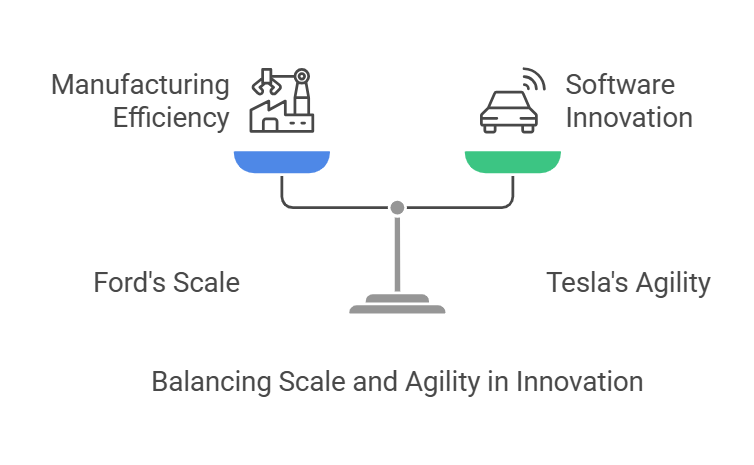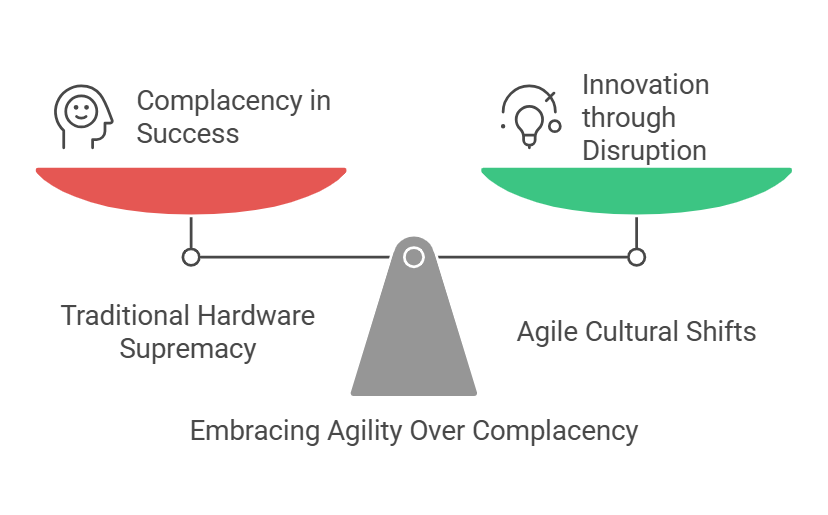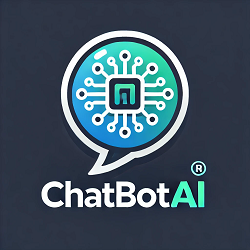By Dr. Dwi Suryanto, Management Strategist and Author of Transformational Leadership
I. Introduction: A Market Earthquake and the Rise of an Unseen Challenger
The Nasdaq’s 3% plunge this week—a drop reminiscent of the 2022 tech correction—was not triggered by a recession warning or geopolitical crisis, but by an unanticipated disruptor: DeepSeek, a Chinese AI startup few had heard of a week ago. This moment mirrors the rise of Tesla in the early 2010s, when legacy automakers dismissed Elon Musk’s vision until it was too late.

As a management strategist, I see this as a watershed moment: a case study in how cost-efficient innovation can upend industries and force leaders to rethink entrenched paradigms.
DeepSeek’s claim—a ChatGPT-rivaling AI model built for just $5.6 million—has rattled investors who bet billions on the assumption that AI dominance requires vast capital, cutting-edge chips, and Western tech hegemony. The question for leaders is no longer whether disruption will occur, but how fast and from where. Let’s dissect the strategic implications.
II. The Disruption: When Efficiency Beats Brillion-Dollar Budgets
The David vs. Goliath Paradox
DeepSeek’s 5.6 million achievements starkly contrast with the $65 billion Meta plans to spend on AI. This disparity evokes Clayton Christensen’s disruptive innovation theory: incumbents often overlook cheaper, simpler alternatives until they redefine the market. Consider how Netflix’s DVD-by-mail model (initially dismissed by Blockbuster) evolved into a streaming titan. Similarly, DeepSeek’s focus on algorithmic efficiency—doing more with less—challenges the “bigger is better” ethos driving U.S. tech giants.
The Open-Source Advantage
By releasing its model under an MIT license, DeepSeek leverages the open-source playbook that built Linux and Android. This accelerates global collaboration while undermining proprietary moats. Microsoft’s 2000s struggle against open-source software—and its eventual embrace of Linux—offers a cautionary tale for firms clinging to closed ecosystems.
Example: Kodak’s downfall wasn’t just about missing the digital camera shift; it failed to recognize how affordable innovation could democratize photography. DeepSeek’s rise signals a similar inflection point for AI.
III. Competitive Dynamics: Algorithmic Agility vs. Brute Force

The Ford vs. Tesla Dilemma
Henry Ford’s assembly line revolutionized manufacturing through scale, much like today’s AI giants rely on hyperscale data centers. But Tesla reimagined cars as software platforms, prioritizing agility over tradition. DeepSeek’s model—compact enough to run on a laptop—suggests AI’s future may favor nimbleness over raw compute power.
Geopolitical Constraints as Innovation Catalysts
China’s limited access to advanced chips (due to U.S. sanctions) forced DeepSeek to innovate around hardware barriers. This mirrors Japan’s 1970s leap into lean manufacturing after oil shortages made resource waste untenable. Adversity breeds creativity—a lesson for leaders complacent with resource abundance.
Case Study: When Toyota’s just-in-time production disrupted Detroit’s inventory-heavy model, it proved constraints can spark superiority. DeepSeek’s algorithmic breakthroughs may do the same for AI.
IV. Strategic Imperatives for Tech Leaders
1. Rebalance R&D Portfolios
Meta’s $65 billion AI bet risks becoming a “moonshot trap” if efficiency gains render brute-force spending obsolete. Leaders must diversify investments, allocating resources to both scale and efficiency. IBM’s pivot from hardware to hybrid cloud offers a template.
2. Embrace Open-Source Collaboration
Google’s Android succeeded by building an ecosystem, not just a product. Firms should explore partnerships with academia and startups to co-innovate, much like Pfizer collaborated with BioNTech on COVID-19 vaccines.
3. Cultivate “Ambidextrous” Leadership
Apple’s ability to exploit its iPhone dominance while exploring AR/VR markets exemplifies ambidexterity. AI giants must similarly balance current revenue streams (cloud services, enterprise AI) with experimental efficiency-driven models.
V. Leadership and Organizational Agility: Thriving in Ambiguity

The Netflix Model: Innovate or Perish
Netflix’s pivot from DVDs to streaming—and later to content creation—exemplifies how agility requires leaders to unlearn past successes. Similarly, AI giants must shed the assumption that hardware supremacy guarantees dominance. Satya Nadella’s transformation of Microsoft from a “Windows-first” to a “cloud-first” company shows how cultural shifts enable agility. Leaders must empower teams to experiment with algorithmic efficiency, even if it disrupts existing revenue models.
Scenario Planning: Learning from Shell’s Playbook
In the 1970s, Shell Oil thrived during the energy crisis by envisioning multiple futures, including an “oil shock” scenario. Today’s tech leaders must similarly model dual AI futures: one where brute-force compute prevails, and another where lightweight models dominate. For instance, NVIDIA could diversify beyond GPU sales by investing in software optimization tools, hedging against a potential decline in hardware demand.
Global Talent Strategy: Beyond Geopolitical Borders
DeepSeek’s success underscores China’s ability to harness its vast STEM talent pool—a lesson for Western firms. IBM’s “hybrid by design” workforce, which blends in-house engineers with freelance AI specialists across 170 countries, offers a blueprint. Companies must also invest in upskilling programs to bridge the algorithmic efficiency gap. Google’s “AI Residency” program, which trains non-tech talent in machine learning, is a step in this direction.
VI. Market Reactions and Investor Strategy: Navigating the Storm
Short-Term Volatility: The GameStop Parallel
The Nasdaq’s 600-point drop mirrors the 2021 GameStop frenzy, where retail investors exposed systemic fragility. Similarly, DeepSeek’s rise reveals how markets overvalue incumbents’ “spending moats.” Investors must distinguish between hype and durable innovation—as Warren Buffett did during the dot-com bubble by avoiding overpriced tech stocks.
Long-Term Strategic Bets: Follow the Amazon Rule
Amazon’s 20-year journey from online bookstore to cloud leader proves that patience beats knee-jerk reactions. Investors should back firms that balance scale and efficiency. For example, while Microsoft invests in data centers, it also acquired GitHub to tap into open-source innovation—a dual strategy that mitigates disruption risk.
Due Diligence in the Age of Hype: Lessons from Theranos
DeepSeek’s unverified $5.6 million claim evokes Theranos’ fraudulent blood-testing promises. Investors must adopt forensic due diligence, leveraging third-party audits (as VCs did with OpenAI’s GPT-4 capabilities) to validate disruptive claims.
VII. Future Scenarios and Industry Evolution: Two Paths Forward
The Sputnik Moment: Catalyst for Western Innovation
The U.S. response to the Soviet satellite—NASA’s Apollo program—spawned technologies like GPS and MRI machines. Similarly, DeepSeek could ignite a U.S. efficiency race, accelerating public-private partnerships like the National AI Research Resource—a proposed $2.6B initiative to democratize AI tools.
Open-Source Proliferation: The Linux of AI?
Just as Linux eroded Microsoft’s OS monopoly, open-source AI models could decentralize power. Meta’s release of LLaMA hints at this future. However, as Red Hat monetized Linux via services, firms like DeepSeek may profit from premium support or customizations.
Sustainability: When Efficiency Meets ESG
AI’s energy appetite is projected to rival Sweden’s electricity use by 2027. DeepSeek’s efficiency could reduce data center emissions, aligning with ESG goals. Consider how Tesla’s battery tech transformed energy storage; efficient AI might similarly revolutionize green tech.
VIII. Conclusion: The Adaptive Leader’s Mandate
DeepSeek’s disruption is not an anomaly but a harbinger of the AI era’s next phase—where agility, efficiency, and open collaboration trump deep pockets. Leaders must:
- Pivot Relentlessly: As Intel shifted from memory chips to microprocessors, tech giants must reallocate resources to efficiency R&D.
- Embrace Paradox: Balance scale with simplicity, proprietary tech with open-source communities.
- Think Globally: Talent and innovation are borderless; build teams and partnerships that transcend geopolitics.
The AI arms race is no longer a sprint between superpowers but a marathon of adaptation. As Sun Tzu wrote, “In the midst of chaos, there is also opportunity.” The chaos DeepSeek ignited is a call to reimagine leadership itself.
Dr. Dwi Suryanto is a management strategist and author renowned for his work on disruption and innovation.

